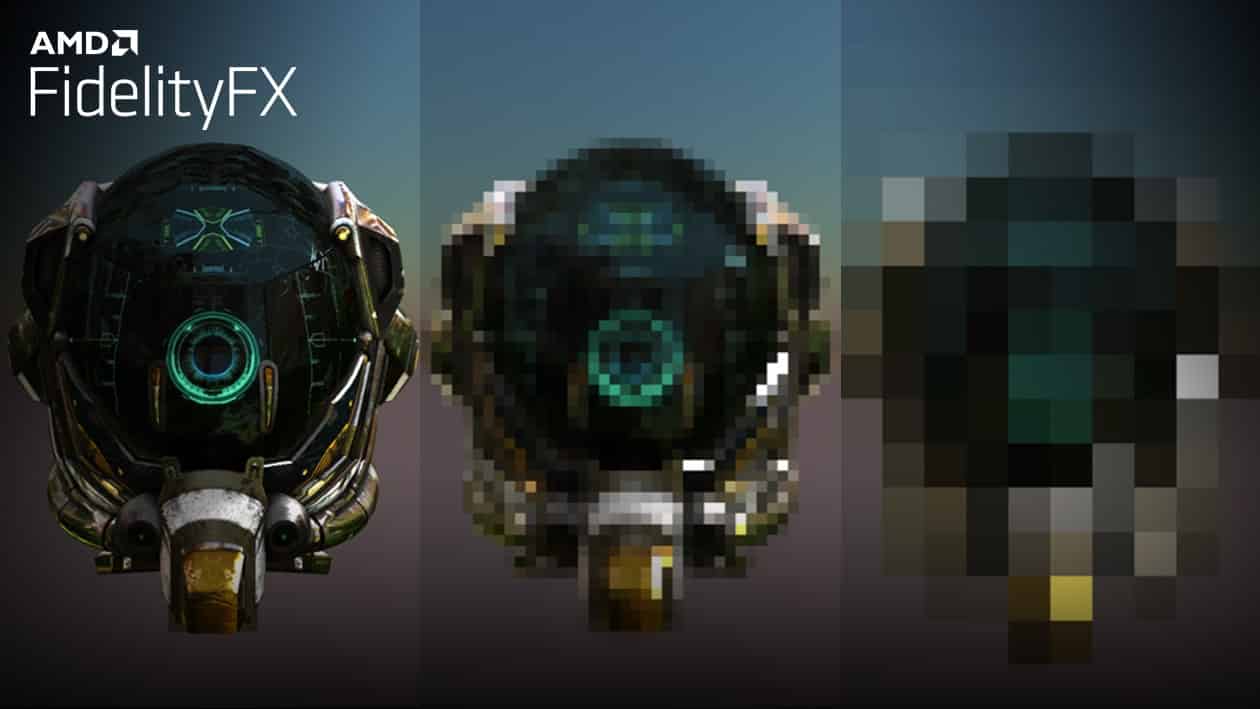[LOOKBACK] FidelityFX Super Resolution: It’s not AMD’s DLSS!
Since Nvidia released its DLSS, a matching feature from AMD has been eagerly awaited. Finally, it’s named FidelityFX Super Resolution, with the striking ability to be integrated into any hardware you want.
Despite having not shown up in any AMD hardware items or provoking controversy in the PC world, FidelityFX Super Resolution (FSR) poses an explicit threat to Nvidia’s DLSS. Its functions and how it gives users more fps for free are not revolutionary, but by no means is the FSR a clumsy duplication of DLSS. This feature would surprisingly be outpacing Nvidia’s counterpart.
FSR’s working mechanism
FSR and DLSS bear close resemblances in the way they streamline our frames. The newest graphics feature from AMD helps refine images, making in-game frames look like they are rendered at a higher resolution than they actually are. In other words, a game at 1080p boosted by FSR would render a playback experience much like that of 1440p.
FSR’s final effects on our frames are not a far cry from what DLSS does, but the base technology these two features employ signifies their essential differences. Nvidia’s DLSS owes much to AI: it fills extra colour or movement information in any blanks based on AI prediction, thus enhancing the image quality. According to its patent, FSR’s approach has nothing to do with machine learning. The combination of linear and non-linear upscale technologies aims at retaining as many details on an image as possible, phasing out image jerking, tearing or blur. This AMD’s feature prioritizes the most attention-drawing visual detail, such as a frame’s eye-catching shapes or delicate elements often overlooked at lower resolution levels.
A broader range of support and surprises for console users
In the long run, FSR would work with nearly all popular CPUs, GPUs and APUs, and they are all striking products of the US-based manufacturer. Cyberpunk 2077, Horizon Zero Dawn and Godfall are among the supported games. Not only differentiating itself from DLSS in terms of functions but FSR would also be brought to old AMD and Nvidia GPUs (despite rumours that Nvidia’s GPUs aren’t supported), which partly reflects AMD’s ambition to make FSR widely accessible on PCs, gaming devices, smartphones, TVs or tablets. This broadened range of support signifies how FSR can acquire a clear edge over DLSS despite being released much later.
The presence of FSR on consoles would be one of its major plus points. Although Xbox Series X and PS5 are definitely providing markedly satisfying gaming performances, continual software overhauls are required to extend their life span. The yearning market would motivate Microsoft, Sony and game developers to join forces with AMD to integrate this feature into their games (and upcoming ones) as a way to give users ongoing experience improvements. We can see FSR and DLSS are similar in many ways, but they play separate roles in the plans of the respective manufacturers.
AMD hasn’t made a further statement on the official release date of FSR, but we can expect it to be in 2021. Their prudence is reasonable, as DLSS 1.0 didn’t quite meet the expectations. However, reliable sources have indicated that developers already have access to FSR and have figured out ways to optimize it in gaming contexts. If one wants to test FSR right now, AMD also supplies software with similar functions and lower efficiency: FidelityFX Contrast Adaptive Sharpening, an open source accessible to various hardware setups.
Should Nvidia worry?
While the Radeon 6000 series has improved the overall rasterized performance, the combination of Nvidia DLSS & Ray-Tracing (along with its long-lasting reign) still causes users to hesitate to choose a GPU from AMD. FSR would make AMD’s GPUs much more appealing to the public eye.
However, whether Nvidia should be worried by FSR still significantly depends on how AMD will employ its FSR and other new features to ensure its competitive advantage. FSR should first claim itself to be an expert in frame enhancement, given DLSS 2.0 has already provided the users with 4x scaling. It would take (much) time for FSR to match the current quality of DLSS before it can mark a clear-cut milestone.



Comments
Post a Comment